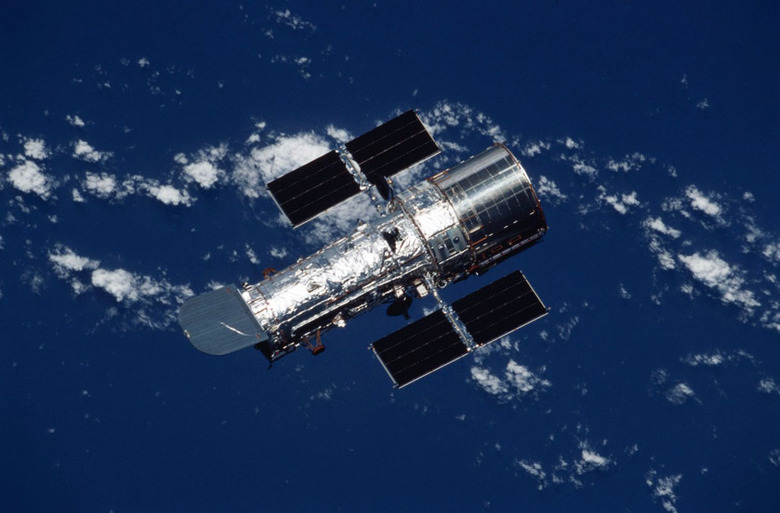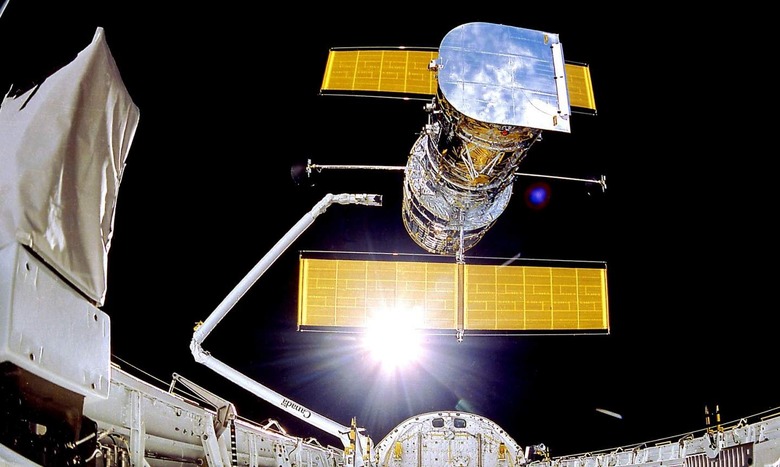Hubble Wakes Up After NASA Space Telescope Fix Success
The Hubble Space Telescope has successfully been switched to its backup hardware, with NASA's potentially risky fix for the ailing instrument seemingly working as planned. Hubble – which has been in operation for 31 years, giving scientists an unprecedented glimpse of distant galaxies – unexpectedly shut down in June, with the payload computer responsible for managing the telescope switching into its protective safe mode.
That's designed to keep the telescope and the spacecraft it's attached to from any damage, should a fault with the systems be encountered. Hubble was secure, and in no danger, NASA said at the time, but it was also not undertaking any scientific work and wouldn't until the payload computer could be restored.
Efforts to switch that back on, however, were met with failure. NASA experimented with backup memory onboard the spacecraft, suspecting that the older chips could have degraded, but that too failed to work. As a result, after a safety and process review earlier this week, a more intense fix was put into action on Thursday, July 15.

Today, NASA says, that fix proved successful. "The switch included bringing online the backup Power Control Unit (PCU) and the backup Command Unit/Science Data Formatter (CU/SDF) on the other side of the Science Instrument and Command & Data Handling (SI C&DH) unit," the space agency said in a statement. "The PCU distributes power to the SI C&DH components, and the CU/SDF sends and formats commands and data. In addition, other pieces of hardware onboard Hubble were switched to their alternate interfaces to connect to this backup side of the SI C&DH. Once these steps were completed, the backup payload computer on this same unit was turned on and loaded with flight software and brought up to normal operations mode."
It's an impressive effort, and a testament to not only the team on the ground managing Hubble today but the engineers who have worked on the instrument from its development, through its more than three decade long mission. Hubble's computer, for example, is based on a NASA design from the 1970s, with specifications that seem positively archaic compared to modern systems. Some of the hardware onboard the telescope itself was physically replaced in 2009, when a Space Shuttle mission undertook the final in-person repairs and, among other things, switched out a faulty computer.
The goal for this latest fix, then, was to get it right rather than rush into something. After all, there's no more Space Shuttle on-hand for another in-person repair. Lending to the severity of the situation was the fact that, though the fault was believed to be in the telescope computer components, switching to the backup system required changes to the broader spacecraft computer as well.

It'll still be a little while before Hubble resumes scientific observations, however, as both tests on the backup hardware continue and the telescope is booted back up.
"The Hubble team is now monitoring the hardware to ensure that everything is working properly," NASA says. "The team has also started the process for recovering the science instruments out of their safe mode configuration. This activity is expected to take more than a day as the team runs various procedures and ensures the instruments are at stable temperatures. The team will then conduct some initial calibration of the instruments before resuming normal science operations."
Previous estimates have suggested that – assuming no other insurmountable hardware problems arise – Hubble could continue operations through the 2030s. Work is already underway on a de-facto replacement, with the James Webb Space Telescope in the final stages of preparation for launch later in 2021. That will be more powerful than Hubble, and sensitive to different electromagnetic wavelengths for an alternate view of the universe, though it'll have some way to go before it can come close to matching Hubble's overall scientific contribution.
